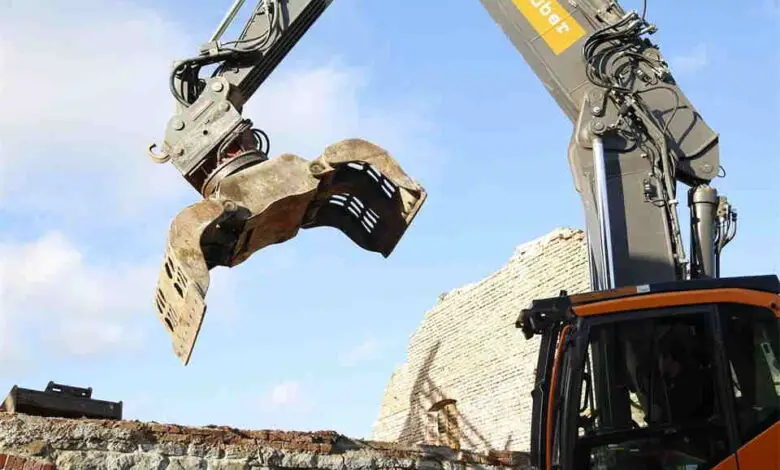Responsible Demolition: Balancing Safety, Sustainability, and Efficiency

Demolition often conjures images of explosive implosions or wrecking balls swinging through concrete. But the reality is more strategic, more methodical, and far more responsible than many realize.
Today, modern demolition is not just about tearing down old structures; it’s about doing so with care—for people, for the environment, and for long-term project success.
What Does Responsible Demolition Mean?
Responsible demolition is the practice of dismantling buildings in a way that prioritizes safety, sustainability, and efficiency. It involves more than just removing a structure—it means planning carefully, minimizing waste, recycling materials where possible, and safeguarding both workers and surrounding communities.
This approach aligns with growing environmental awareness and more stringent health and safety regulations. It’s also increasingly vital as cities redevelop old spaces to make way for smarter, greener infrastructure.
Safety First: Non-Negotiable in Every Project
Any demolition job comes with inherent risks. Unstable structures, hazardous materials like asbestos, and proximity to other buildings or public areas make safety the cornerstone of any responsible demolition plan.
A thorough site assessment is essential before any physical work begins. This involves identifying all potential hazards, developing a clear method statement, and ensuring all workers are properly trained and equipped. Personal protective equipment (PPE), strict exclusion zones, and emergency protocols are standard in professional operations.
In many cases, controlled demolition techniques—like robotic demolition or selective dismantling—are used to maintain the structural integrity of surrounding areas while safely bringing down the target structure.
These methods require specialized knowledge and experience, underscoring the importance of using qualified professionals for any demolition job.
Sustainability in Demolition: More Than Just Buzzwords
The environmental impact of demolition used to be an afterthought. Today, it’s at the center of every responsible project. One of the key goals is to reduce the volume of waste sent to landfill. This is achieved through careful material separation, recycling, and reuse.
Concrete can be crushed and reused as aggregate, metal can be melted down and repurposed, and timber may be salvaged for new construction or manufacturing. In some cases, entire architectural features are preserved and restored.
These sustainable practices are not just environmentally sound—they can also be cost-effective. Salvaging materials can reduce disposal fees and lower the cost of sourcing new materials for subsequent construction.
Innovative companies in the UK are increasingly integrating green practices into their demolition services, setting new standards for the industry. By aligning with sustainability targets and environmental regulations, they help clients meet planning conditions and avoid penalties.
Efficiency: Timely and Cost-Effective Execution
While safety and sustainability are essential, efficiency remains a key metric of success. Time delays in demolition can ripple through a project timeline, causing cost overruns and logistical challenges.
Responsible demolition balances careful planning with streamlined execution. This includes using the right equipment for the job, scheduling tasks logically, and ensuring clear communication between teams.
Pre-demolition audits and 3D modeling can enhance planning, helping identify potential complications early. These technologies allow engineers to visualize each stage of the process and make data-informed decisions, which ultimately saves time and resources.
Moreover, phased demolition can enable concurrent groundwork or construction, helping developers get a head start on rebuilding efforts without compromising safety or sustainability.
The Role of Regulation and Compliance
Compliance with local and national regulations is non-negotiable in any demolition project. In the UK, this means adhering to laws such as the Control of Asbestos Regulations, the Waste Management Licensing Regulations, and health and safety codes outlined by the Health and Safety Executive (HSE).
Permit requirements, environmental impact assessments, and site-specific safety plans are just the beginning. Regular inspections and documented risk assessments are part of ongoing compliance.
For developers and property owners, working with a demolition contractor who understands these obligations is critical. It reduces legal risk and ensures that all aspects of the project are professionally managed from start to finish.
Preparing for the Future: Demolition as a Catalyst for Renewal
Demolition isn’t just about what’s coming down—it’s about what’s coming next. From clearing brownfield sites to making way for affordable housing or green public spaces, responsible demolition is often the first step in meaningful transformation.
Urban regeneration projects increasingly rely on thoughtful demolition to create space for sustainable development. In many cases, this means involving local communities in decision-making processes and maintaining transparent communication throughout.
By approaching demolition as a stage in regeneration, rather than an end in itself, developers can foster greater trust, minimize disruption, and build a sense of shared progress.
Final Thoughts
Responsible demolition is a complex but vital part of modern construction and urban planning. It demands a careful balance of safety, sustainability, and efficiency—none of which can be compromised without consequences.
By investing in proper planning, skilled labor, and eco-friendly practices, today’s demolition experts are transforming an industry often viewed as destructive into one that is forward-thinking, resourceful, and essential to a better-built future.
Whether it’s clearing the way for modern housing, redeveloping urban infrastructure, or simply removing a structure that’s past its prime, responsible demolition is proving that taking things down can be just as impactful as building them up.


